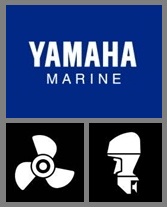
The Yamaha F225 four-stroke was a treat to drive on every application we tested -- there were twin engine offshore boats, bayboats, walleye boats and more. But our guys were captivated by thesleek Hurricane Sundeck 237 with 225 horses lunging at the mooringlines. Wait, is a 225 going to giveit the performance a family-hauling, tube-pulling funcruiser wouldget from a big V-8 inboard?
After driving it, we thought so.Plus, all that space dedicated to the inboard engine is nowdedicated to inboard fun. How would you like to add 12 square feetof party space to your deck? We thought so, too.
And quiet? We heard wind and rushingwater, little else. At idle, a peek at the tach was required to see if the engine was running. At the dock, we confess, somebody tried to restart an already running engine -- three times. A motor this quiet can’t be running. It needs a warning signal forre-start dummies -- ''Hey idiot! I’m alreadyrunning!''
The beauty of the F225 comes fromits elegant design. Yamaha engineers didn’t exactly break the rules in an exercise of civil disobedience. They occupied new territory.
To trim down its size they made it a 60-degree V-6 block. But the big deal in both size and power was the clever way they fed air and fuel to this double-overhead cam engine. On auto engines, the air intake is on the center of the V, taking up a huge (huge by outboard standards) amount of space.Yamaha put the air intakes on the outside, sweeping the air supply through intake silencers forward on the engine to the intake valveson the back.
They had another trick up their sleeve. Each intake tube gets it own fuel injector located just before the intake valve. The result? Extremely efficient air and fuel mixture for a clean, powerful burn -- and even more compactdesign.
To crown this unique achievement, the exhaust was taken from the center of the cylinder banks, in the V -- exactly the opposite of your automobile’s four-stroke engine -- and swept efficiently down and out through the propeller.
So, what did we find in our testdrive that stats can’t tell you? First, all those who said they’d never make a big block four-stroke outboard that a boat could carry were wrong. This boat sat level and true in the water. The hole-shot of tested boats showed no sign of a tail-heavy boat. Indeed all rigs were balanced. Know why? The F225 weighs nearly 300 pounds less than the nearest likely stern-drive alternative -- a 4.3L 210hp unit -- and a scant 100 pounds more than competitive two-stroke DFI 225hp outboards.
We also noticed the power in this engine was equally applied across the operating range. There were no dead spots, no wasted rpm. For each 500-rpm increase, there was a commensurate increase in torque and speed.
There is only one word to describe this engine, AWESOME!!!!

No comments:
Post a Comment